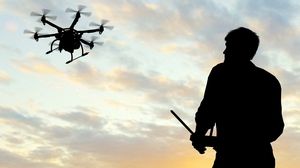Articles
What YOU Need to Know About Drone Waivers! Part 2


As a part of our drone waiver series, we will continue to talk about the 9 waivers drone photographers can apply for under the section 107 regulations.
Today our focus will be Section 107.29 and being unable to fly at night. The FAA drone regulations state: "No person may operate a small unmanned aircraft system during the night." This means that, without a waiver, a drone operator can only fly during civil twilight (30 min before sunrise), during the day, and evening twilight (30 min after sunset).*+
Luckily, for many drone-photographers, the most commonly-requested and approved waiver is Night Operation. When applying for this waiver, be specific, but not too specific. You do not want to limit yourself too much. Do your research on the area and show the FAA that you are prepared to handle any possible situation. This includes, explaining how the operator will maintain a visual line of sight with the drone during the darkness, how you plan to avoid people, structures, and other aircraft, and how you will know - in darkness - the location, altitude, and movement of the drone.
To submit your waivers, visit the FAA's website. After submitting your waiver to the FAA, make sure you pay attention to any correspondence from the FAA to avoid delays. See you next week for part 3! And if you missed part 1, go back and read about Section 107.25 - operation from a moving vehicle, boat, or aircraft.
*Must use anti-collision lights that are visible for 3 statutory miles when flying during either twilights.
+Alaska: Twilight is determined by the Almanac.
